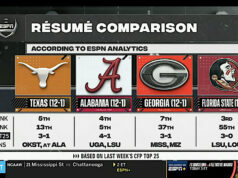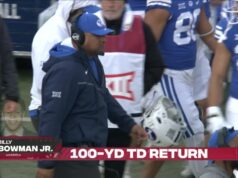
When I was 7 years old, my parents took me, my older brother, and likely a neighborhood kid or two, to the Will Rogers Theater on Western Avenue to watch the movie Victory.
It starred Sylvester Stallone and Michael Caine who formed a team of POWs during World War II to play a soccer match against the German national team.
As usual, Stallone’s character was heavy with the one-liners, and the best ones are shown in this trailer.
Watching some fancy-talking Europeans play a game I liked on the silver screen was highly impressionable, as soccer became my favorite sport.
The following year I got to take in my first real soccer game played by professionals. The Oklahoma City Slickers had their first of three seasons at Taft stadium in 1982 and my father was the volunteer orthopedist for the team.
At 8 years old, I thought it was the coolest thing in the world that I could tag along with my dad while he popped his head into the locker room and check on the team.
That is why I couldn’t be happier to see a professional soccer team playing in Taft Stadium again this year: The Oklahoma City Energy Football Club. The team has seen a remarkable turnaround since last season, and a 13-7-8 overall record has them atop the United Soccer League’s Western Conference as the postseason approaches.
As it stands, the playoff picture is a bit murky with USL regular season games still to be played.
The top six teams will qualify in each conference, with the first and second-place teams having byes in the opening round, which is set to begin Sept. 26. During that round, the third-place teams will host the sixth-place teams, and the fourth-place teams will host the fifth-place teams. For a more in-depth look at the playoff system, check out this explanation from late July.
Home-field advantage
With the OKC Energy compiling a 10-1-3 home record this year, Energy players and fans surely hope to host a playoff game. It also means the improvements at Taft were worth the costs, I guess.
The Energy moved into the renovated Taft Stadium this season after playing its inaugural season at Bishop McGuiness’ Pribil stadium, and this year’s team is looking more like their new stadium: very professional. Pribil Stadium was a good place for the team to start, and it certainly gave the owners a good look at the kind of crowds they could expect, but given the wind conditions during the spring and summer in Oklahoma City, Taft Stadium is much better suited for soccer, since it sits in a bowl below the ground.
The renovations at Taft Stadium included, among other things, putting plastic chairs on the west side bleachers that were mainly green. The chairs are comfortable, and white chairs spell “OKC” in the sea of green. It’s a classy look.
This season, the team has controlled the ball much better with tighter passing and fewer unnecessary long balls, which are quite unpredictable in the Oklahoma wind.
New players lead the way
The addition of striker Danni Konig from the Danish club Vestsjælland has certainly been key to the team’s success. Konig is currently second in overall points, second in overall goals in the USL and first in game-winning goals with seven.
New goalkeeper Evan Newton has also been important, currently ranking seventh in goals-against average, sixth in overall saves and second in shutouts league wide. It helps that Newton has a lot of support from defender Cyprian Hedrick, who keeps opposing strikers from getting as many chances as they want.
I’m sure a decent percentage of fans at any Energy home game are relatively new to soccer, but the team has done a good job ensuring they can still have fun.
Given that the stadium’s new concession stands are not on the grounds of a Roman Catholic high school, fans are able to buy beer this season. I’ve noticed that can help alleviate any misgivings baseball or (American) football fans have when attending their first soccer game.
This second season has clearly been a success, no matter how far the team goes into the playoffs.





















